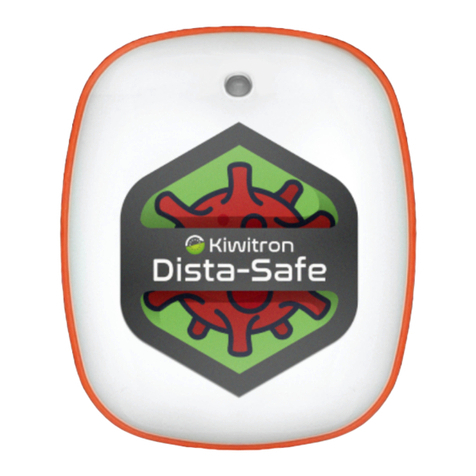
SAFETY INSTRUCTIONS AND WARNINGS
The device must be operated by appropriately trained and qualified personnel.
Before installing and operating the device, please read and understand this manual carefully
to avoid damaging the product and putting your own safety at risk.
The technical information in this document is provided for information purposes only and
does not constitute a contractual commitment. Kiwitron s.r.l. reserves the right to make any
graphic or functional changes to devices and/or software without prior notice.
The KiwiEye device CANNOT replace the safety devices of the vehicle on which it is installed.
The KiwiEye device MUST be installed in compliance with general safety regulations.
It is forbidden to install the KiwiEye device to inhibit or alter the operation of the safety
systems already present on the vehicle.
It is forbidden to use the system to operate power contactors, as opening them during
current circulation would cause an electric arc.
WARN THE OPERATOR of the vehicle before carrying out any remote operation (web cloud or
remote connection via PC) to prevent dangerous situations.
The management of blocking (or slowing down) MUST observe the safety of the vehicle and
operators. Blocking a vehicle MUST NOT create potential dangerous situations.
Do not use the device in the presence of flammable gases or fumes, in the vicinity of filling
stations, fuel depots, chemical plants or during blasting operations.
Avoid any potentially explosive atmosphere.
To protect the health of operators, place the device at a distance of at least half a metre from
the driver's seat to limit exposure to electromagnetic waves emitted by wireless devices.
It is forbidden to place the device near sources of strong heat or exposed to the weather.
It is forbidden to install the devices in positions which restrict the driver's view or which may
hinder his/her movements.
Avoid placing the device with metal parts covering its external WiFi/Bluetooth antenna, which
could lead to malfunctioning of wireless devices.
It is strictly forbidden to drill fixing holes in vehicle structures in order to install the device.
Only use brackets or fastening systems that do not compromise the structure of the vehicle
and that are provided for and authorised by the manufacturer.




























